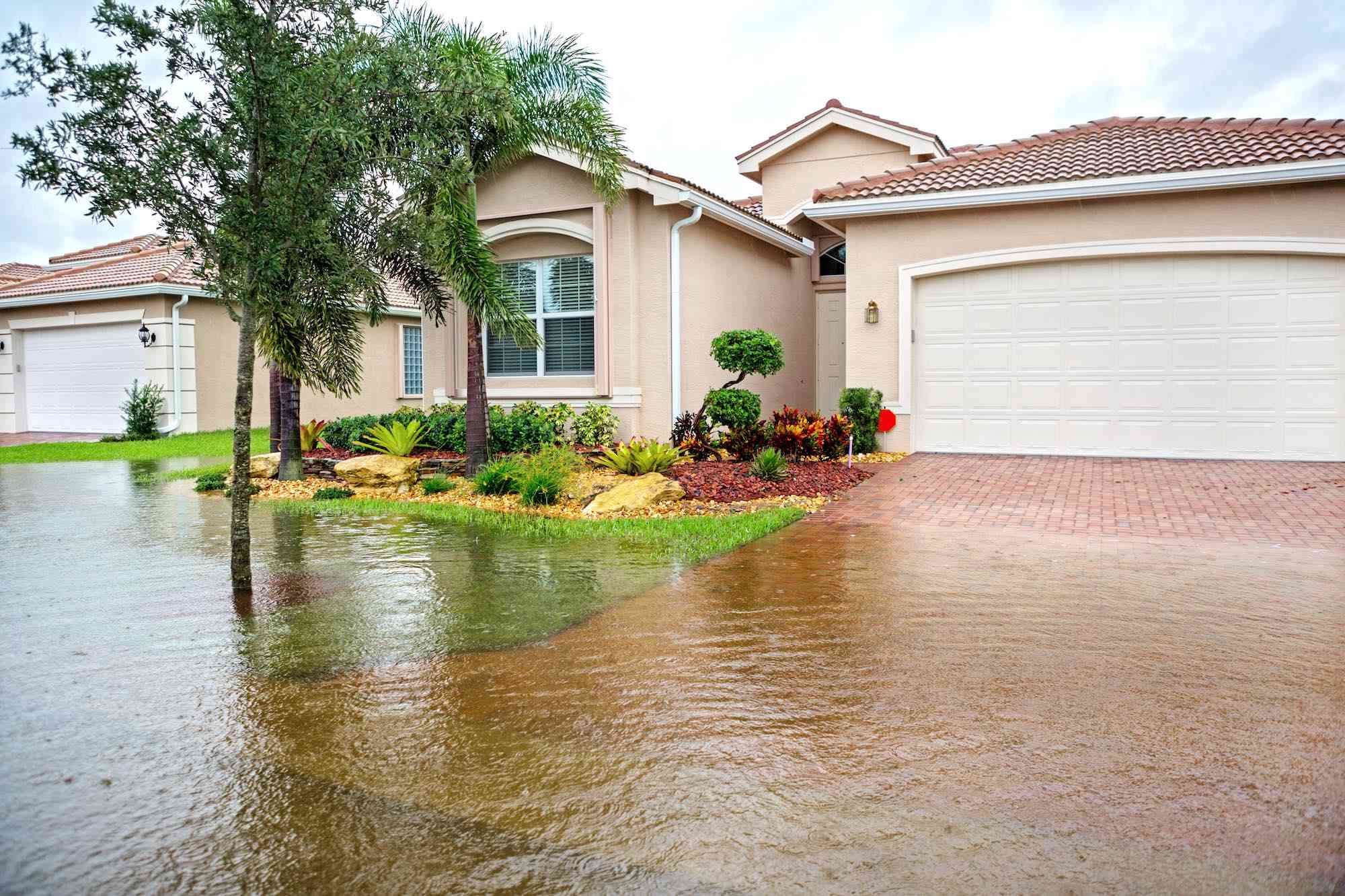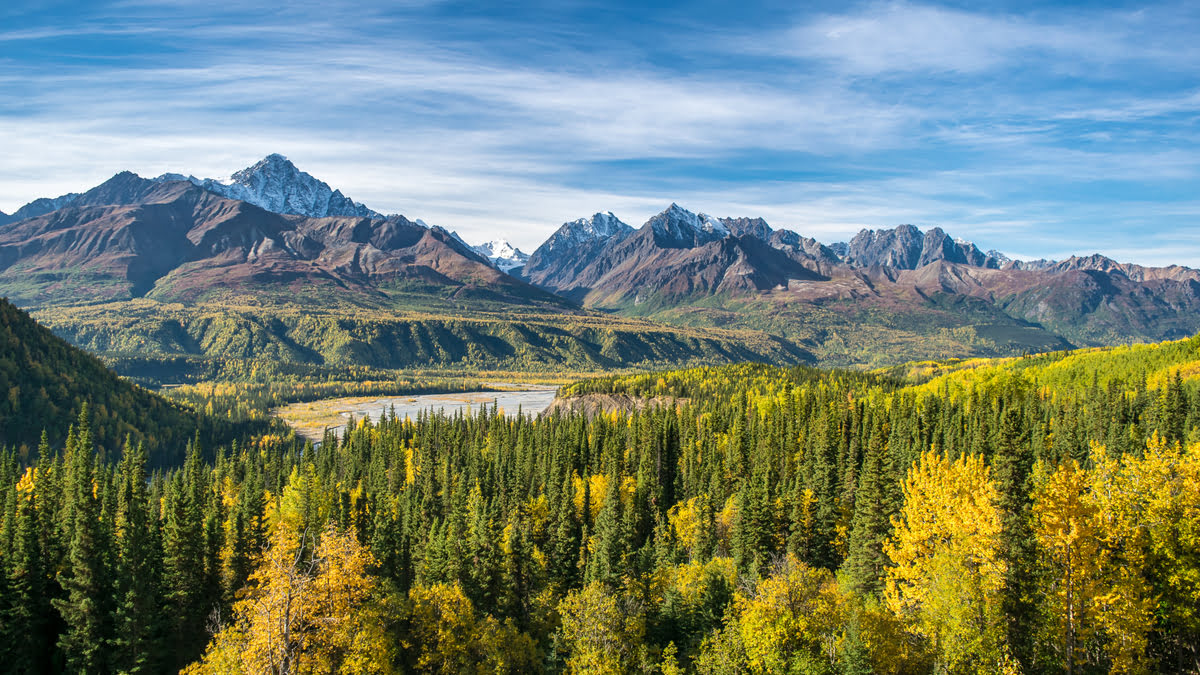Home>Gardening Basics>How To Stop Flooding In Backyard


Gardening Basics
How To Stop Flooding In Backyard
Modified: February 8, 2024
Learn how to prevent flooding in your backyard by understanding soil composition. Discover effective strategies for managing excess water and maintaining a healthy outdoor space.
(Many of the links in this article redirect to a specific reviewed product. Your purchase of these products through affiliate links helps to generate commission for Chicagolandgardening.com, at no extra cost. Learn more)
Table of Contents
- Introduction
- Understanding the Causes of Backyard Flooding
- Assessing the Drainage Issues in Your Yard
- Clearing the Gutters and Downspouts
- Installing French Drains
- Creating Rain Gardens
- Building a Rainwater Harvesting System
- Installing a Sump Pump
- Proper Grading and Landscaping Techniques
- Implementing Retention and Detention Ponds
- Conclusion
Introduction
Welcome to our comprehensive guide on how to prevent backyard flooding. If you live in an area prone to heavy rainfall or have noticed standing water in your yard after a storm, you may be facing drainage issues. Backyard flooding can not only damage your property but also pose a safety risk if water seeps into your home or affects the stability of your foundation.
Understanding the causes of backyard flooding is the first step towards finding effective solutions. Poor drainage, inadequate landscaping, clogged gutters, and heavy clay soil are some common factors that contribute to excessive water accumulation. Fortunately, there are several measures you can take to mitigate these issues and create a healthier, drier outdoor environment.
In this guide, we will walk you through various strategies to prevent backyard flooding and provide actionable tips to enhance your yard’s drainage. From assessing the drainage issues in your yard to implementing landscaping techniques and installing drainage systems, we will cover it all. By following the steps outlined in this guide, you can protect your property and create a more sustainable and visually appealing outdoor space.
It is important to note that the solutions mentioned in this guide are general recommendations and may not be suitable for every situation. Depending on the specific details of your yard and local regulations, you may need to consult with a professional landscaper or drainage expert to design a tailored solution for your needs. However, the information provided here will give you a solid foundation to understand the key principles and options for preventing backyard flooding.
Now, let’s dive into the causes of backyard flooding and begin the journey towards a dryer, more functional yard. By implementing the strategies outlined in this guide, you’ll be able to safeguard your property and enjoy a worry-free outdoor space even during heavy rainfall events.
Understanding the Causes of Backyard Flooding
Backyard flooding can occur due to various factors, and understanding the underlying causes is essential in order to effectively address the issue. Here are some common causes of backyard flooding:
- Poor drainage: If your yard has inadequate drainage, excess water from rainfall or irrigation can accumulate, leading to flooding. This can be caused by poorly designed or clogged drainage systems, compacted soil, or sloping terrain that directs water towards your property instead of away from it.
- Inadequate landscaping: Improper landscaping choices can contribute to backyard flooding. For example, if your yard has an excessive amount of impermeable surfaces, such as paved areas or compacted lawns, water will not be able to infiltrate into the soil. Instead, it will accumulate and cause flooding.
- Clogged gutters and downspouts: When gutters and downspouts are clogged with debris like leaves or twigs, water cannot flow freely away from your roof. This can result in overflowing gutters that deposit large amounts of water near the foundation of your home, increasing the risk of flooding.
- Heavy clay soil: Clay soil has poor drainage properties, making it prone to water accumulation. When clay soil becomes saturated, it becomes almost impermeable, causing water to accumulate on the surface and leading to backyard flooding.
By understanding the specific causes of backyard flooding in your yard, you can determine the most appropriate solutions to implement. Whether it involves improving drainage systems, modifying landscaping techniques, or addressing soil composition, the key is to address the root causes of the problem.
It’s important to note that multiple factors can contribute to backyard flooding, and a comprehensive approach is often required to effectively mitigate the issue. In the following sections, we’ll explore various strategies and solutions that can help prevent backyard flooding and create a more welcoming and functional outdoor space.
Assessing the Drainage Issues in Your Yard
Before implementing any measures to prevent backyard flooding, it is crucial to assess the drainage issues in your yard. By understanding the specific areas where water accumulates and the patterns of water flow, you can develop a targeted plan to address the problem. Here are some steps to help you assess the drainage issues in your yard:
1. Observe after rainfall: After a heavy rainfall, take a walk around your yard and observe where water tends to pool or flow. Note any areas where you see standing water or evidence of erosion caused by water runoff.
2. Check gutters and downspouts: Inspect your gutters and downspouts to ensure they are clear of debris and functioning properly. Clogged gutters can cause water to overflow and deposit near the foundation of your home, increasing the risk of flooding.
3. Evaluate the slope of your yard: Assess the slope of your yard to determine if water flows away from or towards your property. Ideally, the yard should slope away from your home to allow water to naturally drain away. If you notice areas with inadequate slope or water pooling near your foundation, these are areas of concern that may require attention.
4. Test soil permeability: Dig small test holes in different areas of your yard and observe how quickly the holes fill with water. This can give you an idea of the soil’s permeability. If water fills the holes slowly or remains stagnant, it indicates poor drainage.
5. Consider the impact of neighboring properties: Assess how the drainage from neighboring properties affects the water flow in your yard. If your yard is at a lower elevation than the surrounding properties, you may be more prone to receiving water runoff from uphill areas.
6. Consult a professional: If you’re unsure about the drainage issues in your yard or need expert advice, consider consulting with a professional landscaper or drainage specialist. They can assess the situation and provide recommendations tailored to your property’s specific needs.
By thoroughly assessing the drainage issues in your yard, you can identify problem areas and determine the most effective solutions. This step is crucial in developing a comprehensive plan to prevent backyard flooding and ensure the long-term health and functionality of your outdoor space.
Clearing the Gutters and Downspouts
One of the simplest yet effective measures to prevent backyard flooding is by ensuring your gutters and downspouts are clear of debris. Clogged gutters can lead to water overflow, causing water to pool near the foundation of your home and increasing the risk of flooding. Here’s how you can clear your gutters and downspouts:
1. Gather the necessary tools: Before you start, gather a sturdy ladder, work gloves, a trowel or scoop, and a bucket or bag to collect the debris.
2. Safely access the gutters: Place the ladder on stable ground and lean it against your house. Make sure the ladder is secure and follow proper safety guidelines. Never stand on the top two rungs of the ladder for stability.
3. Remove debris from the gutters: Use a trowel or scoop to remove leaves, twigs, dirt, and other debris from the gutters. Place the debris in a bucket or bag to ease cleanup.
4. Check the downspouts: Once the gutters are clear, check the downspouts for any blockages. You can use a garden hose to flush out any debris or use a plumber’s snake to manually remove obstructions.
5. Ensure proper water flow: After clearing the gutters and downspouts, test the water flow by running a hose into the gutters. Ensure that water flows freely down the downspouts and away from the foundation of your home.
6. Regular maintenance: To prevent future clogs, it’s important to regularly clean your gutters and downspouts. Depending on the surrounding trees and foliage, aim for at least two cleanings per year. Consider installing gutter guards or covers to minimize debris buildup.
By keeping your gutters and downspouts free from debris, you can effectively direct water away from your home and minimize the risk of backyard flooding. Regular maintenance of your gutter system is a crucial step in ensuring the proper functioning of your home’s drainage system.
Installing French Drains
French drains are an effective solution for redirecting excess water away from your yard and preventing backyard flooding. They are designed to collect and channel water to a designated drainage area, relieving the soil of excess moisture. Here’s how you can install French drains:
1. Plan the drainage route: Determine where the water needs to be directed. Identify the problem areas in your yard and plan the drainage route accordingly. Consider the slope of your yard and ensure the drain will be positioned to collect water efficiently.
2. Dig the trench: Dig a trench along the planned drainage route. The depth and width of the trench will depend on the amount of water expected and the size of the drain pipe. Generally, a depth of 12 to 18 inches and a width of 6 to 12 inches are recommended.
3. Line the trench with landscape fabric: Place landscape fabric along the bottom and sides of the trench. This will help prevent soil clogging the drain pipe over time.
4. Add a layer of gravel: Pour a layer of gravel into the trench, covering the landscape fabric. This will provide a stable base for the drain pipe and aid in water filtration.
5. Install the drain pipe: Place the perforated drain pipe on top of the gravel layer. The perforations should face downwards to allow water to enter the pipe while preventing soil and debris from clogging it.
6. Cover with additional gravel and landscape fabric: Fill the trench with more gravel, ensuring that the drain pipe is completely covered. Place another layer of landscape fabric on top of the gravel to prevent soil from entering the pipe.
7. Backfill the trench: Carefully backfill the trench with soil, thoroughly compacting it to prevent settlement. Ensure that the soil slope is directed away from your property to encourage proper water flow.
8. Provide an outlet: At the end of the French drain system, provide an outlet for the collected water. This can be a dry well, a drainage ditch, or a drainage pit filled with gravel to facilitate water dispersion.
Installing French drains can be a relatively complex task, so it may be necessary to seek professional assistance or guidance from a landscaping expert. Proper installation is essential to ensure optimal functioning and effectiveness in preventing backyard flooding.
Creating Rain Gardens
Rain gardens are not only visually appealing but also serve as an effective solution to prevent backyard flooding by capturing and absorbing excess water. By creating a rain garden, you can create a beautiful and functional landscape feature while reducing the risk of water accumulation. Here’s how you can create a rain garden:
1. Choose an appropriate location: Select an area in your yard where water tends to accumulate or flows naturally during rainfall. Ideally, the location should be at least 10 feet away from your home’s foundation and away from underground utilities.
2. Assess the soil: Evaluate the soil drainage in the chosen area. Rain gardens thrive in well-draining soil, so if the soil has poor drainage, you may need to amend it with organic matter or consider alternative drainage solutions.
3. Design the garden shape: Determine the shape and size of your rain garden. A gently sloping depression or basin-like shape is ideal for capturing and holding water during rainfall. Consider incorporating curves or other interesting features for visual appeal.
4. Select appropriate plants: Choose native plants that can tolerate both wet and dry conditions. These plants are adapted to the local climate and will thrive in your rain garden. Include a mix of grasses, flowers, shrubs, and trees to create a diverse and balanced ecosystem.
5. Dig the rain garden: Dig the designated area to a depth of around 6-8 inches, removing any grass or weeds. Ensure that the base is level and has a slight slope towards the center to encourage water infiltration and absorption.
6. Add a layer of compost: Spread a layer of compost or organic matter over the bottom of the rain garden. This will help improve water retention, provide nutrients to the plants, and enhance the soil structure.
7. Plant the garden: Arrange your chosen plants in the rain garden, considering their growth patterns, heights, and colors. Dig holes for each plant, backfill with soil, and gently tamp down to ensure proper root contact with the soil.
8. Mulch and water: Apply a layer of mulch around the plants to help conserve moisture, suppress weed growth, and improve the garden’s appearance. Water the newly planted rain garden thoroughly and maintain regular watering until the plants are established.
A well-designed rain garden can effectively absorb and filter excess water, preventing it from pooling in your yard. By incorporating native plants and creating an attractive landscape element, you can enjoy the benefits of a rain garden while actively contributing to water conservation efforts.
Building a Rainwater Harvesting System
Rainwater harvesting is an excellent way to prevent backyard flooding while also providing a sustainable water source for your garden. By collecting rainwater, you can reduce the burden on municipal water supplies and utilize this valuable resource efficiently. Here’s how you can build a rainwater harvesting system:
1. Assess your options: Determine the type of rainwater harvesting system that best suits your needs and available space. Common options include rain barrels, above-ground tanks, and underground cisterns.
2. Choose an appropriate location: Select a location in your yard that allows for convenient water collection and storage. Consider factors such as accessibility, available space, and proximity to downspouts or gutters.
3. Install a collection system: Connect your rainwater harvesting system to the downspouts from your roof. Use a diverter or filter to remove debris and prevent clogs. Ensure that the collection surface, such as the roof or a rain chain, is clean and free from contaminants.
4. Install a storage system: Depending on the size and type of rainwater harvesting system, install an appropriate storage container, such as a rain barrel or tank. Ensure that it is properly sealed and secure to prevent leaks or contamination.
5. Consider filtration and purification: If you plan to use the harvested rainwater for drinking or irrigation of edible plants, consider incorporating filtration and purification systems to remove impurities and ensure its safety.
6. Utilize the collected rainwater: Make use of the harvested rainwater for various purposes, such as watering your garden, washing outdoor equipment, or even flushing toilets. Be mindful of its usage and prioritize areas that benefit most from water conservation.
7. Maintain the system: Regularly inspect and clean the collection system, removing any debris or sediment that may accumulate. Check for leaks, proper operation, and adequate storage capacity. Empty and clean rain barrels or tanks if necessary.
A rainwater harvesting system can significantly reduce water runoff and prevent backyard flooding, while also providing a sustainable water source for your needs. By implementing this eco-friendly solution, you can minimize the impact on municipal water supplies and contribute to water conservation efforts. Remember to check local regulations and obtain any necessary permits before installing a rainwater harvesting system.
Installing a Sump Pump
If your property is prone to water seepage or basement flooding, installing a sump pump can be an effective solution to prevent water damage and maintain a dry environment. A sump pump collects and pumps out water that accumulates in a sump pit, helping to prevent the water from reaching your basement or crawl space. Here’s how you can install a sump pump:
1. Determine the ideal location: Identify the lowest point in your basement or crawl space where water tends to accumulate. This is where the sump pit, which houses the sump pump, should be installed.
2. Dig and prepare the sump pit: Dig a hole deep enough to accommodate the sump pit. The size of the pit will depend on the type and size of the sump pump you select. Ensure that the pit is large enough to allow sufficient water storage and pump operation.
3. Install the sump pump: Place the sump pump into the pit, following the manufacturer’s instructions. Ensure that the pump is level and securely positioned. Connect the pump’s discharge pipe to a suitable drainage outlet, such as a storm sewer or dry well.
4. Install a check valve: Attach a check valve to the discharge pipe. This valve prevents the pumped-out water from flowing back into the sump pit, ensuring the efficiency of the pump.
5. Connect the pump to a power source: Plug the sump pump into a nearby electrical outlet. For additional safety, consider installing a GFCI (ground fault circuit interrupter) outlet or connecting the pump to a dedicated circuit.
6. Test the sump pump: Fill the sump pit with water to activate the pump and test its operation. Ensure that the pump automatically turns on and effectively removes water from the pit. Adjust the float switch if necessary to ensure proper pump activation and deactivation.
7. Install a sump pump cover: Consider installing a cover for the sump pit to prevent debris and odors from escaping. This cover should be removable for easy access to the pump when maintenance or repairs are required.
8. Regularly maintain the sump pump: Regularly inspect and clean the sump pit to remove any debris that may interfere with the pump’s performance. Test the pump periodically to ensure it is in proper working order.
Installing a sump pump can provide you with peace of mind by effectively managing water accumulation and preventing basement flooding. However, if you are unfamiliar with plumbing or electrical work, it is advisable to seek professional assistance for a proper installation. Regular maintenance and occasional testing of the sump pump will help ensure its optimal performance, protecting your property from water damage.
Proper Grading and Landscaping Techniques
Proper grading and landscaping techniques play a crucial role in preventing backyard flooding by directing water away from your property’s foundation and promoting efficient drainage. By implementing these techniques, you can create a well-designed and functional outdoor space. Here are some key considerations:
1. Assess the existing grade: Evaluate the slope and contour of your yard to determine if it directs water towards or away from your home. Ideally, the grade should slope away from your foundation to prevent water from pooling near your property.
2. Modify the grade: If necessary, adjust the grade of your yard to ensure proper water flow. This can be achieved by adding or removing soil to create the desired slope away from your home. Consult with a professional if you require extensive grading or if you have a large yard.
3. Create swales or channels: Construct shallow channels, known as swales, to direct water away from specific areas of your yard. These can be designed with gentle slopes and lined with gravel or grass to prevent erosion and encourage proper water runoff.
4. Install retaining walls: Retaining walls can help manage slope stability and prevent soil erosion. They can be strategically placed to redirect water flow and create level planting areas. Choose materials that are both functional and aesthetically pleasing.
5. Use permeable paving: Consider using permeable paving materials, such as permeable concrete or paving stones with gaps, which allow water to infiltrate into the soil rather than forming puddles. This reduces runoff and promotes natural drainage.
6. Incorporate rain gardens or bioswales: Design and install rain gardens or bioswales in low-lying areas of your yard. These features are designed to capture and absorb water, reducing runoff and promoting groundwater recharge.
7. Select appropriate plants: Choose plants that are well-suited to your local climate and have the ability to withstand both wet and dry conditions. Native plants are generally a good choice, as they are adapted to the local environment and require less maintenance.
8. Use mulch and ground cover: Apply a layer of organic mulch around plants and use ground cover plants where appropriate. These help retain moisture, prevent soil erosion, and improve overall water absorption in your yard.
By implementing proper grading and landscaping techniques, you can effectively manage water flow and prevent backyard flooding. Remember to consider the specific characteristics of your yard and seek professional guidance if necessary. A well-designed and properly maintained landscape will not only enhance the aesthetic appeal of your property but also contribute to its overall functionality and resilience against heavy rainfall events.
Implementing Retention and Detention Ponds
Retention and detention ponds are effective stormwater management systems that can help prevent backyard flooding by collecting and temporarily storing excess water. These ponds are designed to control the flow of water, reduce downstream flooding, and promote groundwater recharge. Here’s what you need to know about implementing retention and detention ponds:
1. Understand the difference: Retention ponds are designed to permanently hold water, creating a permanent body of water such as a pond or lake. Detention ponds, on the other hand, are designed to temporarily hold water during periods of heavy rainfall, gradually releasing it into the surrounding waterways or underground.
2. Consider the size and location: Assess your property to determine the appropriate size and location for the retention or detention pond. Factors such as the size of your property, soil type, slope, and proximity to water bodies need to be considered to ensure efficient water management.
3. Consult with a professional: Designing and constructing retention or detention ponds requires professional expertise. Consult with a civil engineer, landscape architect, or stormwater specialist who can assess your property, provide design recommendations, and ensure compliance with local regulations.
4. Plan the pond design: The retention or detention pond should be designed to accommodate the expected volume and flow of water. Consider incorporating features such as sediment traps, berms, and spillways to enhance the functionality and aesthetics of the pond.
5. Determine the outlet structure: The outlet structure of the pond is crucial in controlling water release. It should be designed to manage the water level during both normal and extreme rainfall events. A professional will help determine the appropriate structure for your specific needs.
6. Choose suitable vegetation: Select native aquatic vegetation for the retention or detention pond. These plants can help stabilize the soil, prevent erosion, provide habitat for wildlife, and improve the overall health of the ecosystem. Consult with a local nursery or environmental specialist for advice on suitable plant species.
7. Maintain the pond: Regular maintenance is essential to ensure the proper functioning of the retention or detention pond. This includes removing sediment, controlling vegetation growth, and inspecting the outlet structure. Consult with a professional for guidance on the specific maintenance requirements for your pond.
Implementing retention and detention ponds requires careful planning, design, and professional expertise. These systems can provide significant benefits in managing stormwater, preventing backyard flooding, and creating a sustainable ecosystem. By incorporating these ponds into your property, you contribute to the overall health of the environment while safeguarding your home and reducing the risk of water damage.
Conclusion
Preventing backyard flooding is essential to protect your property and maintain a safe and functional outdoor space. By understanding the causes of backyard flooding and implementing the right strategies, you can mitigate the risk of water accumulation and damage. From assessing drainage issues and clearing gutters to installing French drains, creating rain gardens, and building rainwater harvesting systems, there are various techniques available to address the problem.
Proper grading and landscaping techniques, along with the installation of sump pumps and the implementation of retention and detention ponds, also play crucial roles in preventing backyard flooding. These measures ensure efficient water management, improve drainage, and reduce the risk of flood-related damage to your home and property.
Remember, every yard and situation is unique, so it is important to assess your specific needs and seek professional assistance when necessary. Consulting with experts in landscaping, drainage, and stormwater management can help you design and implement the most effective solutions tailored to the characteristics of your property.
By taking proactive measures to prevent backyard flooding, you can enjoy a peaceful and worry-free outdoor environment, even during heavy rainfall events. A well-maintained and properly functioning drainage system, along with the use of appropriate landscaping techniques, will not only protect your property but also contribute to water conservation efforts and the overall health of the environment.
Now that you have gained a deeper understanding of soil science and effective strategies for preventing backyard flooding, it’s time to take action. Evaluate your yard, identify any existing drainage issues, and implement the techniques and solutions discussed in this guide. Create a sustainable and resilient outdoor space that will withstand heavy rainfalls and ensure the long-term health of your property.





